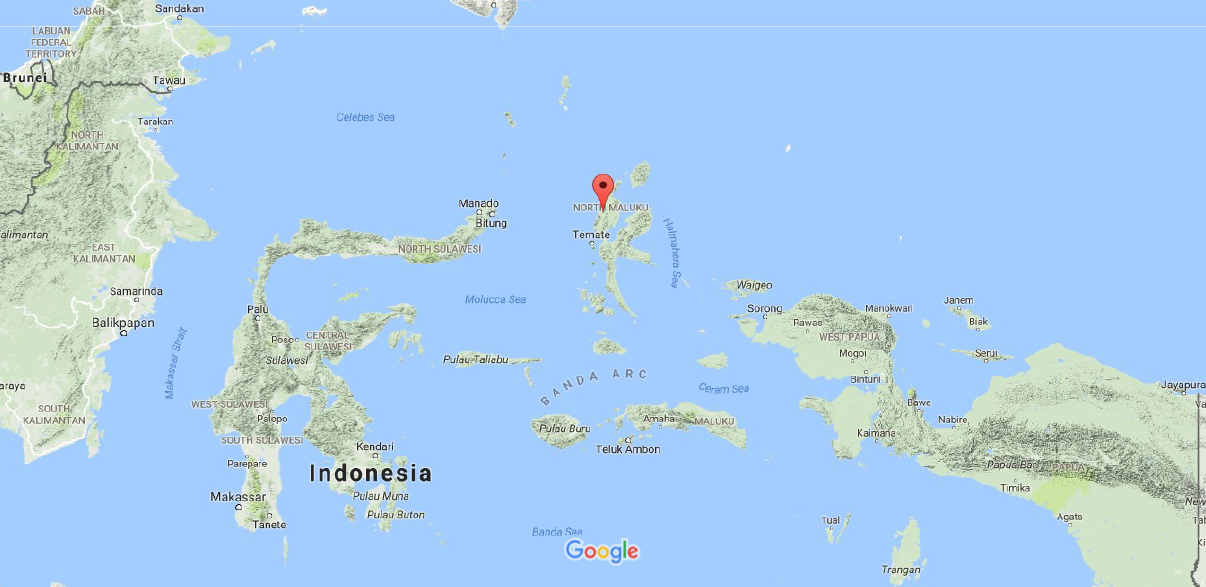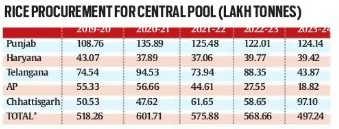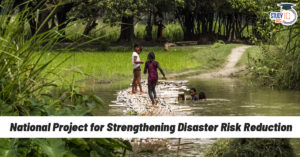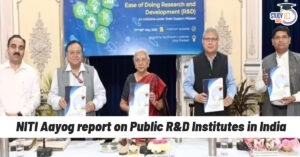Table of Contents
Mt. Ibu
Context: Mt. Ibu erupted and sent ash 4 km (2.5 miles) high, as streaks of purple lightning flashed around its crater.
About Mt Ibu
- Location: Mt. Ibu is an active stratovolcano located on Halmahera Island in Indonesia.
- Elevation: It stands at an elevation of approximately 1,325 metres (4,347 feet) above sea level.
- Geography: The volcano is situated on the northwestern coast of the island, within the Maluku Islands chain.
- Ibu is one of Indonesia’s most active volcanoes which erupted more than 21,000 times last year.

| Fact |
| Indonesia, situated within the Pacific “Ring of Fire,” experiences frequent seismic and volcanic events due to its geological characteristics. |
Stellar Nucleosynthesis
- The process by which stars forge elements inside their cores.
- It is the process that involves the creation of chemical elements by nuclear fusion reactions within stars.
- Exception: Hydrogen, the most abundant and lightest element in the universe, was formed in the initial aftermath of the Big Bang and not through stellar nucleosynthesis.
- Hydrogen Fusion: It all starts with hydrogen, the simplest and most abundant element in the universe.
- Inside stars, hydrogen nuclei fuse to form helium, releasing energy in the process. This energy is what we perceive as the star’s light and heat.
- Helium Fusion: After the hydrogen is depleted, the star begins to fuse helium into heavier elements like carbon and oxygen.
- This happens through processes like the triple-alpha process, where three helium-4 nuclei (alpha particles) combine.
Creating Heavier Elements
- As stars evolve, they can fuse heavier elements in their cores. For example, carbon can fuse into neon, sodium, and magnesium. This process continues, creating elements up to iron.
- Supernova Nucleosynthesis: For elements heavier than iron, the process requires a supernova—a massive star explosion. The incredible heat and pressure during a supernova allow for the creation of elements beyond iron, all the way up to uranium.
The Role of Stars
- Main Sequence Stars: These stars, like our Sun, primarily burn hydrogen into helium.
- Red Giants: As a star runs out of hydrogen, it becomes a red giant and starts burning helium.
- Supernovae: Massive stars end their lives in supernova explosions, contributing to the creation of the heaviest elements.
The Impact on the Universe
- Stellar nucleosynthesis significantly alters the abundances of elements in the universe.
- The elements created within stars are spread across the cosmos when stars die, seeding the universe with the building blocks for planets and life.
| Fact |
| This process was first proposed by Fred Hoyle in 1946 and has been refined over the years to explain the observed abundances of elements and their isotopes. |
Punjab Haryana & Food Security
Context
- Until the mid-2000s, Punjab and Haryana contributed 90% of the wheat for the public distribution system (PDS) and other government programs.
- In the current marketing season, the two states account for 75.5% of the total wheat procured for Central foodgrain storage.
- Government agencies have purchased 25.5 million tonnes (mt) of the 2023-24 winter-sown crop harvested from late March.
- Of this, 12.2 mt came from Punjab and over 7 mt from Haryana.
Impact of Climate Change on Cereal Production
- Bumper Production Years:
- In 2019-20 and 2020-21, wheat production reached record levels of 39-43 mt.
- During this period, the share of Punjab and Haryana dropped to just over 50%.
- Madhya Pradesh emerged as the biggest wheat producer in 2019-20, overtaking Punjab.
- Recent Climate Shocks:
- Production has suffered due to unseasonal heat in March 2022 and heavy rain in March 2023 during the critical grain-formation stage.
- An unusually warm November- December 2023 affected wheat yields, especially in Central India.
- The delayed arrival of winter due to El Nino caused premature flowering and shortened the crop’s vegetative growth phase.
- Madhya Pradesh, Gujarat, Maharashtra, and parts of Rajasthan, which have early sowing periods, were most affected.
Impact on Wheat-Producing States
- Procurement Drops:
- Wheat procurement from Madhya Pradesh dropped from 12.8 mt in 2019-20 and 2020-21 to just 4.6 mt this season.
- Uttar Pradesh and Rajasthan also saw steep declines from their 2020-21 highs.
- Resilience of Punjab and Haryana:
- Punjab and Haryana have better weathered the climate shocks due to longer winters and early to mid-November sowing.
- These states have been crucial in maintaining wheat stocks, which were at 7.5 mt on April 1, barely above the minimum operational-cum-strategic reserve of 7.46 mt.

Impact on Rice-Producing States
- Shifts in Procurement:
- Traditionally, rice procurement was concentrated in Punjab, Haryana, and the Godavari-Krishna and Kaveri deltas of Andhra Pradesh and Tamil Nadu.
- New major contributors like Telangana, Chhattisgarh, Odisha, and UP have reduced the combined share of Punjab and Haryana in total procurement.
- Their share fell from 43-44% in the early 2000s to an average of 28.8% in the four years ending 2022-23.
- In the current crop year, this share has risen to almost 33%.
- Irrigation Advantage:
- Assured access to irrigation has helped mitigate the impact of last year’s patchy monsoon.

Implications of Welfare Schemes
- National Food Security Act (NFSA), 2013:
- More than 80 crore people are entitled to 5 kg of wheat or rice per month at highly subsidised rates.
- Since January 2023, this grain has been provided free to all NFSA beneficiaries.
- Procurement Requirements:
- The NFSA, along with other welfare schemes and open market sale operations, requires state agencies to procure 60-65 mt of grain annually.
- This requirement is typically met comfortably in most years.
Project Astra
Context: Google introduced an early version of Project Astra at the company’s annual developer conference.
About Project Astra
- A new multimodal AI agent developed by Google.
Key Features
- Capabilities: Can answer real-time questions using text, video, images, and speech by retrieving relevant information.
- Can see the world, remember where objects are placed, and verify the correctness of computer code using the phone’s camera.
- Voice: More straightforward with no range of emotional diversity in its voice.
- Versatility: Not limited to smartphones; demonstrated usage with smart glasses.
- Learning: Can learn about the world, providing an experience similar to a human assistant.
Examples, Case Studies And Data
- International Relations (GS 2): The Australian Federal Budget Document announced the start date for the Mobility Arrangement for Talented Early-professionals Scheme (MATES) for Indian Nationals.
- International Institution Report, Health (GS 2): WHO Global Report on Neglected Tropical Diseases (NTDs) 2024: Key Findings
- Progress:
- 50 countries have successfully eliminated at least one NTD as of December 2023.
- Iraq became the 50th country to eliminate at least one NTD in July 2023.
- Bangladesh became the first country to eliminate visceral leishmaniasis as a public health problem in October 2023.
- India Specific:
- India was certified free of dracunculiasis and yaws.
- India treated about 117 million fewer people for lymphatic filariasis and soil-transmitted helminthiasis in 2022 compared to 2021.
- 56% of India’s population required interventions against NTDs in 2022.
- Other:
- Noma was added to the list of NTDs in 2023.
- 5 countries eliminated one NTD, and 1 country eliminated two NTDs in 2023.
- Progress:


 National Project for Strengthening Disas...
National Project for Strengthening Disas...
 CAG Report on Pradhan Mantri Kaushal Vik...
CAG Report on Pradhan Mantri Kaushal Vik...
 NITI Aayog Report on Public R&D Inst...
NITI Aayog Report on Public R&D Inst...

























